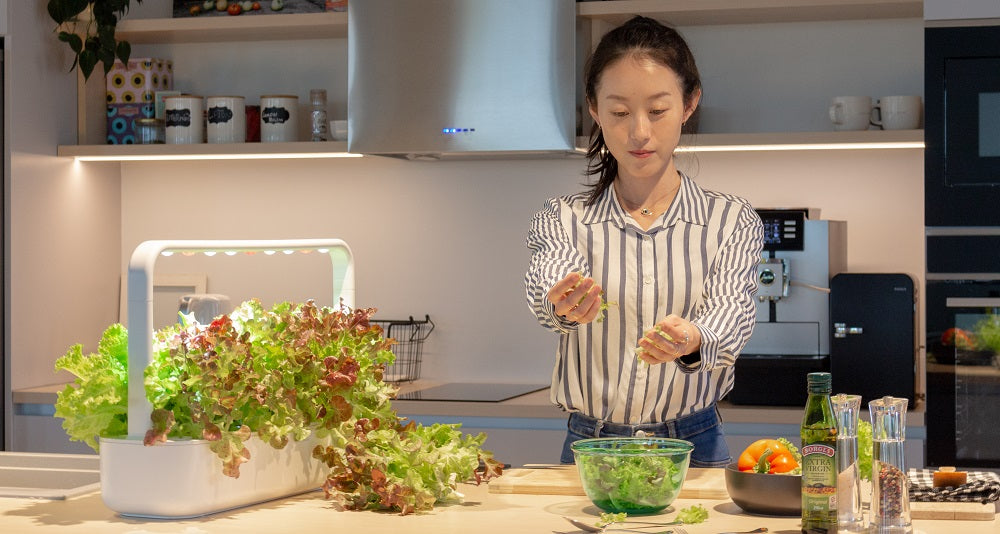News
The (not so) Secret Key to a Healthy Gut

Did you know that some of the world’s most successful athletes, including Arnold Schwarzenegger and Lewis Hamilton, follow a plant-based diet? This type of diet has multiple health benefits.
In particular, Mediterranean and vegetarian diets have been linked to a lower risk of developing cardiovascular disease, type 2 diabetes, elevated blood pressure and healthier body weight.
Vegetables, fruits, grains, beans, nuts, seeds and proteins like tempeh and tofu are good sources of vitamins and minerals. They’re also loaded with an important dietary component - fiber.
What is fiber?
Fiber is a type of carbohydrate that your body can't digest. It doesn’t get “broken down” into simple sugar molecules like glucose but instead passes through your digestive tract acting like a broom, sweeping away the food.
Fiber can only be found in unprocessed plant foods, so eat a lot of them! Foods high in fiber include fruits, vegetables and whole grains.

Photo by Ella Olsson from Pexels
Why is fiber important?
To understand how fiber benefits our metabolism, it’s helpful to know that there are two types. Some plant foods contain more soluble fiber, while others have more insoluble fiber.
Have you ever eaten a delicious meal that left you feeling satisfied but not stuffed? This feeling is the result of consuming fiber. Soluble fiber acts like a sponge: it absorbs water as it passes through the gut, thickening your food and making the stomach feel fuller. This helps to slow digestion and prevent spikes in blood glucose levels - so, eating a fiber-rich diet is a natural way to help keep your cholesterol levels in check.
Some great sources of soluble fiber include oats, peas, potatoes, lentils and beans, avocados, apples, citrus fruits and berries.
Insoluble fiber acts more like a broom for your intestines, sweeping out harmful toxins. It moves through the gut quickly and can help prevent constipation and certain types of cancer as well.
Good sources of insoluble fiber include fruits with skins, whole-grain bread, brown rice, raw vegetables, nuts and legumes.

Dietary fiber “feeds” the good bacteria that live in your gut, also known as gut microbiota. These beneficial bacteria play a key role in our health, so we need to make sure we're eating enough fiber from whole plant foods.
As an added benefit, a fiber-rich diet can help you feel full for longer and prevent overeating.
How much fiber do you need?
The American Dietary Guidelines recommend eating 25 to 35 grams of fiber per day for adults, or 14 grams of fiber for every 1,000 calories.
Alarmingly, research shows that only 5% of men and 9% of women are getting the recommended daily amount of dietary fiber. Filling this “fiber intake gap” is considered important by many dietitians and physicians, so let’s explore how to do it!

How to add more fiber to your diet
If you’re having a hard time getting fiber-rich foods into your diet, try these simple steps:
- Add more veggies (both cooked & raw) to every meal and aim for a total of 5 servings of fruit and vegetables daily
- Go for whole grain bread and crackers (aim for 3+ grams of fiber per serving)
- Overall, try to consume at least 3 servings of whole grains and cereals each day (whole wheat, oats, brown rice, bran or barley).
- When baking, swap at least half of your white flour for whole-wheat flour
- Have smoothies or fruits as snacks instead of drinking fruit juices
- Substitute beans or legumes for meat 2-3 times a week
- Drink 1.5 - 2 litres of water per day - it’s important to increase your water intake as you start eating more fiber!
All of these steps are a great way to gradually increase your fiber intake and improve your overall health. (NB! If you have a gastrointestinal condition such as irritable bowel syndrome, be sure to consult a dietitian or physician before changing your diet.)
You can also add more green salads to your diet by growing them at home. As an example, 1 cup (35g) of romaine lettuce grown in a Smart Garden will provide you with 1.09g of dietary fiber. Adding 2 tomatoes, a medium-sized cucumber and half an avocado to your salad will give you a total of 13g of fiber - that’s 37% of an adult’s recommended daily intake (RDI) for fiber.
Fiber can add tastes, textures, and health-boosting properties to your meals. Don’t forget to include it in your diet! Your body will love you for it.

